




 |
 |
 |
 |
 |
The helicopter dropped us off just 10s of meters from the Err and Jenatch detachment faults. The proximity of the faults allowed us to make transects from the footwall to the hanging wall. We were to observe deformation associated with a detachment fault in quartzofeldspathic rocks, and look at the variation in deformation across the fault (are the mylonites pre-Alpine?) The Err-Platta nappes expose the continent-ocean transition of the southern margin of the Piemont-Liguria ocean (see Figure below). The Err nappe contains the breakaway detachment bordering a Bernina basement high. Other detachment faults developed within the Err nappe are the Err detachment and the younger Jenatsch detachment. The Err detachment is marked by chlorite-rich green breccias and black foliated cataclasites. There is an absence of dynamic recrystallization in quartz, indicating that faulting occurred at temperatures less than 300º C. The hanging wall of the Err nappe contains E-tilted blocks of pre-Permian gneiss and schist, Albula granite, and Triassic pre-rift sediments. Continental blocks are most abundant in the Eastern Err nappe, and they decrease in abundance towards the west and are altogether scarce in the Platta nappe. |
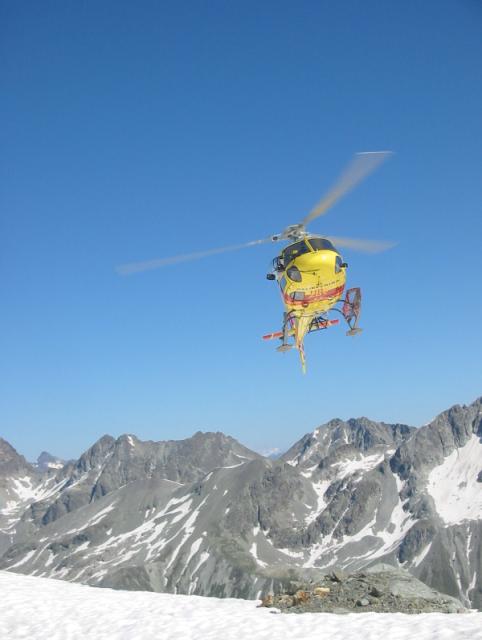 |
At Piz Jenatch, we saw Albula granite in the footwall, and metamorphic rocks (Variscan age) and post-rift sediments (dolomites, sandstones, shales) in the hanging wall. The fault gouge associated with the detachment fault was not observed, most likely due to erosion. We observed an intensity of deformation as we moved structurally up towards the detachment fault surface. The total thickness of the deformation associated with detachment faulting in the footwall was 1-5 m. The detachment fault surface was corrugated and had an abundance of slickenlines. Some areas of the surface were discolored and polished, likely due to fluid flow along the fault system.
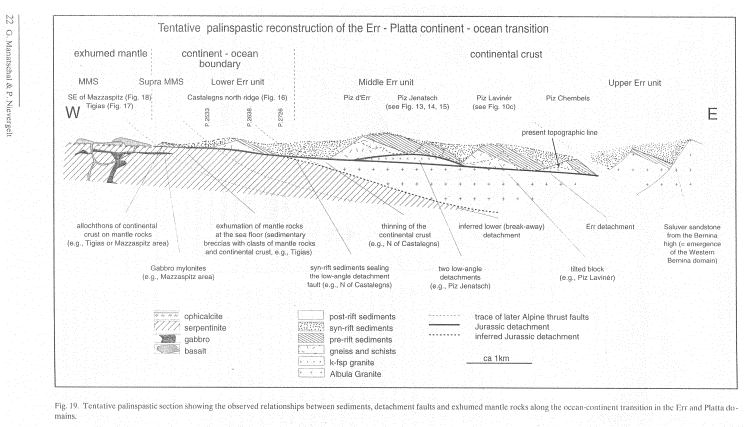
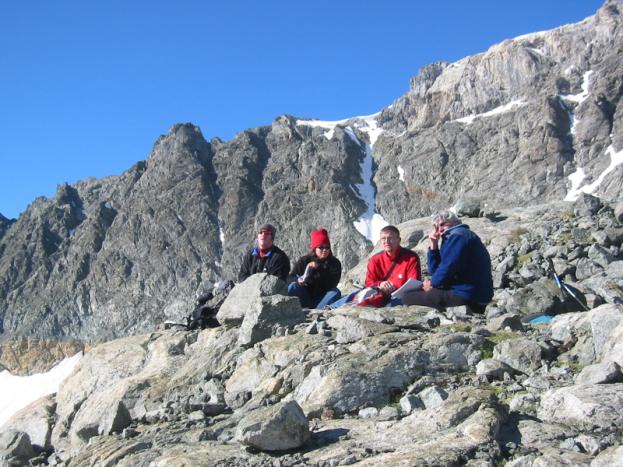 Graham Baines, Elena Miranda, Craig Grimes, and Dr. Mike Cheadle have a discussion near Piz d’Err. |
 Unnamed peak near Piz Lavinier, cut by a sub-horizontal detachment fault. |
 Graham Baines and Dr. Barbara John stand on the detachment fault surface. Graham and Bobbie are standing in the trough between two corrugations on the fault surface. |
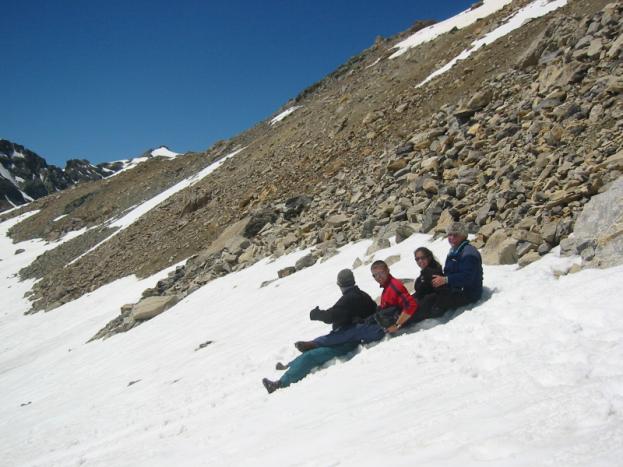 The Midwesterners show the Brits how poor man’s sledding is done: sans sled, rain pants on. |
 Who let the Brit drive? |
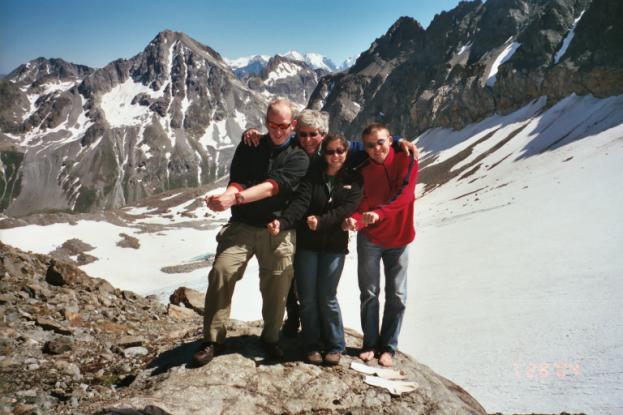 Graham (restricted hair) Baines, Dr. Mike “Wednesday Wig” Cheadle, Elena Miranda and Craig Grimes have a pre-helicopter-pickup groove. |
Manatschal, G. and Bernoulli, D., 1999. Architecture and tectonic evolution of nonvolcanic margins: Present-day Galicia and ancient Adria, Tectonics, v. 18, no. 6, p. 1099-1119.
Whitmarsh, R.B., Manatschal, G. and Minshull, T.A., 2001. Evolution of magma-poor
continental margins from rifting to seafloor spreading, Nature, v. 113, p. 150-153.
Manatschal, G., 1999. Fluid- and reaction-assisted low-angle normal faulting:
evidence from rift-related brittle fault rocks in the Alps (Err Nappe, eastern
Switzerland), Journal of Structural Geology, v. 21, p. 777-793.
Manatschal, G. Marquer, D., Fruh-Green, G.L., 2000. Channelized fluid flow and
mass transfer along a rift-related detachment (Eastern Alps, southeast Switzerland),
GSA Bulletin, v. 112, no. 1, p. 21-33.